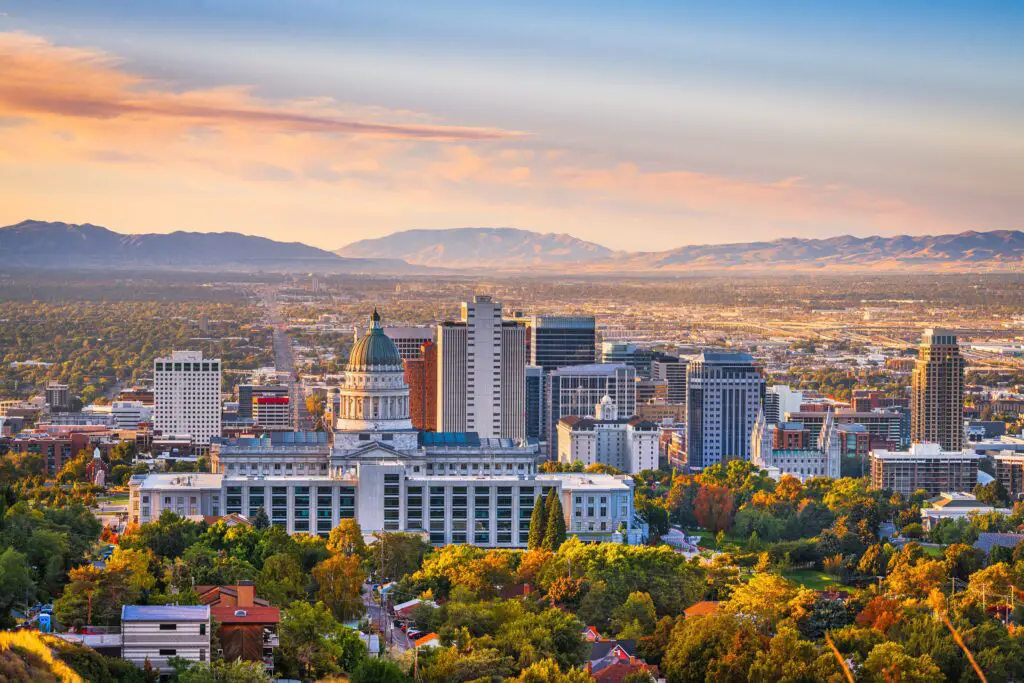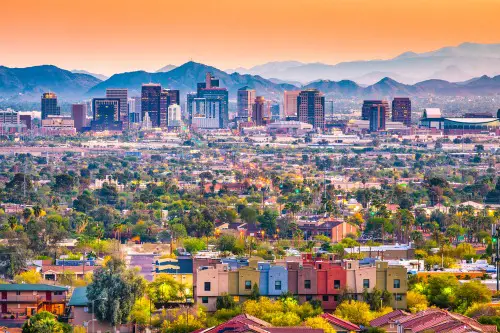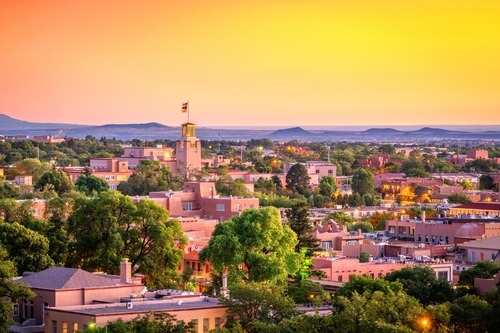1. Florida

CBS News recently conducted an experiment in Miami to see how affordable food was, and the results were alarming. Florida has seen food prices steadily increase in recent years, and the trend is expected to continue into 2025. A number of factors contribute to this price surge, with weather-related disruptions playing a key role. The state has experienced several devastating hurricanes and tropical storms in recent years, which have affected both crop production and distribution networks. Citrus crops, particularly oranges, which are a major agricultural output for Florida, have been severely impacted. This disruption is expected to lead to higher prices for citrus-based products such as juices and fruits.
In addition to weather events, Florida is facing increasing labor costs, which have further fueled the rise in food prices. Farmers are having to offer higher wages to attract workers, and this labor shortage is making it more expensive to harvest and process crops. Moreover, Florida’s dependency on imports for certain foods, such as vegetables and grains, has left the state vulnerable to price fluctuations caused by global supply chain issues. These factors combined mean that Floridians will likely face ongoing food price hikes in the coming year.
2. Oklahoma

Oklahoma is in for a tough year in 2025, as food prices are expected to climb due to a combination of agricultural challenges and broader economic pressures. USA Today claims Oklahoma was one of the states that most suffered food inflation in 2024, and things aren’t looking much better now. The state’s agricultural sector, which produces a wide range of crops and livestock, is facing difficulties from both droughts and increased input costs. Rising fuel prices have driven up transportation costs, and Oklahoma’s reliance on cattle farming means that beef prices are expected to see a significant increase. Moreover, the increasing cost of feed for livestock is another factor contributing to higher meat prices.
The labor shortage is another issue that Oklahoma is grappling with, as farmers struggle to find enough workers to harvest crops and tend to livestock. This shortage is leading to increased labor costs, which are inevitably passed on to consumers. Additionally, supply chain disruptions continue to affect the availability of certain products, and this scarcity is expected to result in higher prices for both local and imported food items. As a result, Oklahoma residents can expect food prices to remain high throughout 2025, with no relief in sight.
3. California

California is no stranger to food price hikes. 2024 was a year of high food inflation according to NBC4 Los Angeles, and 2025 is shaping up to be another year of soaring costs. A major reason behind this surge is the ongoing impact of bird flu outbreaks that have decimated poultry populations across the state. This has led to a sharp spike in egg prices, with some reports citing price increases of up to 70% compared to last year. Not only are eggs becoming significantly more expensive, but the production of other staples, such as dairy and poultry products, is also facing disruptions. The combination of these factors is expected to keep California’s food prices elevated for the foreseeable future.
Additionally, California’s unique set of environmental regulations has contributed to the rising cost of food. Stricter animal welfare laws are driving up production costs for farmers, while the state’s push toward sustainable farming practices is increasing the cost of certain crops. For example, avocados and citrus fruits, which are staples of California’s agricultural output, are becoming pricier due to changes in water usage restrictions and the increasing costs of organic farming practices. As a result, residents can expect to see higher grocery bills across the board, particularly for items sourced locally.
4. Nevada

Nevada, like many states, is expected to see food prices climb in 2025 due to a combination of climate change and supply chain disruptions. One of the primary contributors to this increase is the ongoing labor shortage in the agricultural sector. Many farmers in Nevada are struggling to hire enough workers to meet the demands of food production, and this shortage is leading to higher labor costs, which are inevitably passed on to consumers. As a result, residents of Nevada will find that basic grocery items like vegetables, meat, and dairy are becoming more expensive. KTNV reported last year that more families were already struggling to afford food, so this is not unexpected.
In addition to labor issues, Nevada has also been impacted by climate change, with droughts severely affecting water supplies. This is especially troubling for crops that require significant water, such as fruits and vegetables. The ongoing scarcity of water resources in the region is expected to result in lower crop yields, which in turn drives up prices. As the state struggles with these environmental and economic challenges, food prices are expected to continue rising, making it increasingly difficult for residents to afford the basics.
5. Utah

Utah is set to experience an uptick in food prices as we head into 2025, with several factors contributing to the price increases. Like other states in the West, Utah has been dealing with the impacts of drought, which has affected both crop yields and the availability of water for irrigation. For a state that relies heavily on agriculture, particularly in producing fruits and vegetables, this has created a perfect storm of rising costs. As a result, consumers can expect to pay more for fresh produce, something local news station KJZZ predicted late last year.
Additionally, supply chain disruptions are still plaguing the state, making it harder for food manufacturers and distributors to meet demand. Shortages in packaging materials, labor, and transportation have driven up operational costs, which are inevitably passed along to the consumer. Furthermore, Utah’s reliance on imports for certain staple foods, such as grains and dairy products, means that residents are particularly vulnerable to price volatility in the global market. As a result, food prices are expected to rise, causing financial strain on many households across the state.
6. Texas

Texas is bracing for another year of rising food prices in 2025. After already seeing a 25% increase in grocery costs over the last few years, experts predict that Texans will continue to face higher food bills. A significant part of this rise is due to inflationary pressures, which have caused transportation costs to soar. Given Texas’ reliance on both local and national food supply chains, these higher transportation costs are trickling down to consumers. Items like beef, pork, and chicken are expected to be particularly impacted, as they require longer supply chains to move products from ranches to grocery stores.
Moreover, Texas has also been grappling with droughts and extreme weather events, which have negatively impacted agriculture. Crops like corn, wheat, and rice—which are critical for both the state’s economy and its food production—are at risk. With these weather-related challenges, farmers face lower yields and increased costs for irrigation and crop management. As a result, food prices are expected to remain high throughout 2025, making it harder for Texas families to stick to their grocery budgets.
7. Michigan

In Michigan, 2025 is expected to bring continued price increases for several essential food items. Coffee, garlic, milk, and eggs are among the items projected to experience significant price hikes. The reasons for this are multifaceted: challenges with supply chains, tariffs on imported goods, and a tightening labor market have all played a role in inflating prices. Additionally, Michigan has experienced erratic weather patterns, from severe winters to hot summers, which have disrupted local farming production. This unpredictability in climate, particularly affecting the state’s dairy and egg producers, will likely contribute to higher costs at the grocery store.
The USDA’s World Agricultural Supply and Demand Estimates report has indicated that Michigan’s agricultural sector may struggle to keep pace with demand due to ongoing challenges in milk production and egg shortages linked to the avian flu. As these items become more difficult to produce or import, shoppers in Michigan are expected to feel the pinch at checkout. While grocery prices in Michigan may fluctuate, it’s clear that the state will face persistent upward pressure on food costs throughout the year.
8. Idaho

Idaho, often considered a breadbasket for much of the country, is facing a troubling rise in food prices for 2025. The state’s agricultural sector, which is a key part of its economy, is dealing with challenges on multiple fronts. A shortage of labor has made it difficult to harvest crops efficiently, and this is leading to increased costs for farmers. In addition, Idaho has seen its fair share of weather-related disruptions, from wildfires to heatwaves, which have negatively impacted crop yields. These weather events, coupled with increasing input costs for seeds, fertilizers, and fuel, mean that food prices in Idaho are set to climb.
Moreover, Idaho’s dependence on both domestic and international supply chains has left it vulnerable to global market fluctuations. While the state produces significant amounts of potatoes, wheat, and dairy products, other essential goods like fruits and grains are imported from outside the region. As international shipping and freight costs continue to rise, Idaho residents will feel the pinch at grocery stores. This combination of local and global factors is expected to lead to continued food price inflation across the state in 2025.
9. Arizona

Arizona is expected to face higher food prices in 2025, as the state grapples with a combination of climate-related challenges and inflationary pressures. Droughts have become a significant concern, with the state facing water shortages that are hurting crop production, especially in the agriculture-heavy central and southern parts of the state. Crops like lettuce, spinach, and melons—which are staples of Arizona’s farming output—are suffering from reduced yields due to limited irrigation. As a result, these products are likely to see price hikes, pushing up the cost of fresh produce in grocery stores.
Additionally, Arizona is experiencing a labor shortage in the agricultural sector, which is driving up labor costs. Farmers are offering higher wages to attract workers, and these increased costs are being passed on to consumers. With Arizona also being a key distributor of food to other states, disruptions in the supply chain—whether due to transportation delays or rising fuel prices—are further pushing up the cost of groceries. Residents of Arizona will need to brace themselves for continued price increases across a range of food products in 2025.
10. New Mexico

New Mexico is another state where food prices are expected to rise significantly in 2025. Agriculture in the state has long been dependent on water from the Colorado River, but droughts have caused significant reductions in water availability for irrigation. This is especially true for the state’s major crops, such as chili peppers and onions, both of which are staples of New Mexican cuisine. As a result of reduced water resources, farmers are experiencing lower yields, which will drive up the prices of these crops. With chili peppers being in high demand both locally and nationally, consumers can expect to see a noticeable price jump for these key ingredients.
Furthermore, New Mexico’s reliance on imported food products means that disruptions in the global supply chain will impact residents’ grocery bills. With inflation still lingering and costs for shipping and fuel rising, food prices are projected to increase across the board. The state is also dealing with a shortage of farm labor, which has exacerbated the situation, further raising production costs. As these factors continue to unfold, New Mexico’s food prices are likely to rise, making it more difficult for residents to keep their grocery budgets in check.
11. North Carolina

North Carolina is set to see a rise in food prices throughout 2025, with significant impacts on both local and imported products. The state has faced major challenges in recent years, including hurricanes and flooding, which have caused damage to crops like tobacco, peanuts, and sweet potatoes. These disruptions have led to lower yields and increased costs for producers, ultimately driving up prices for these staple crops. As a result, residents of North Carolina can expect to pay more for locally grown produce in the coming year.
Additionally, the cost of meat, particularly pork, is expected to rise due to both supply chain issues and labor shortages in the state’s agriculture sector. North Carolina is a major pork producer, and the state has already seen disruptions in its farming operations. Rising feed costs and labor shortages are pushing up the price of pork, making it harder for residents to afford this staple meat. With further challenges expected in the year ahead, food prices in North Carolina are likely to continue their upward trajectory.
12. Alabama

Alabama’s food prices are expected to rise significantly in 2025 due to a combination of climate challenges and economic pressures. The state’s agricultural sector has been dealing with unpredictable weather patterns, including excessive rainfall, flooding, and droughts. These weather events have affected key crops like cotton, corn, and peanuts, which are crucial to the state’s food production. As farmers face lower yields, prices for these crops will inevitably rise, impacting grocery bills for residents.
In addition to weather disruptions, Alabama is experiencing labor shortages in its agricultural sector. With fewer workers available to harvest crops, the cost of production has increased. Labor shortages in food processing plants have also led to delays and higher operational costs. With transportation costs continuing to rise and demand for food products remaining high, Alabama residents will face higher grocery bills in 2025. The combination of local agricultural challenges and broader economic factors will make it a difficult year for food consumers in the state.
13. Georgia

Georgia is expected to experience significant food price hikes in 2025, with a number of factors contributing to the rising costs. The state has been heavily impacted by both climate change and labor shortages in the agricultural industry. With unpredictable weather patterns causing crop failures, particularly in Georgia’s important peanut and peach industries, food prices are expected to climb. Additionally, the rising cost of water for irrigation has made it more difficult for farmers to grow these crops, further contributing to supply shortages and price hikes.
Labor shortages in the state’s agriculture sector have also driven up the cost of food production. With fewer workers available to harvest crops and process food, operational costs have increased. In addition to local production challenges, Georgia is also dealing with supply chain issues, which are expected to lead to higher prices for imported goods. As a result, Georgia residents will find their grocery bills rising throughout 2025, making it harder to keep food costs under control.
14. Arkansas

Arkansas is bracing for higher food prices in 2025, as the state’s agricultural industry faces several challenges. Arkansas is a major producer of rice, soybeans, and poultry, but disruptions in these industries are expected to lead to price hikes. The ongoing labor shortage is affecting both the harvesting and processing of these products, leading to higher production costs. Additionally, Arkansas has experienced its share of severe weather events, including flooding and drought, which have reduced yields for many crops.
The state’s reliance on exports of agricultural goods means that disruptions in global markets are also impacting food prices. With rising transportation and fuel costs, Arkansas residents can expect to see price increases for both local and imported food items. These challenges, combined with inflationary pressures and ongoing labor shortages, are set to keep food prices high throughout 2025. Residents will need to adjust their budgets to account for the rising cost of food in the coming year.


